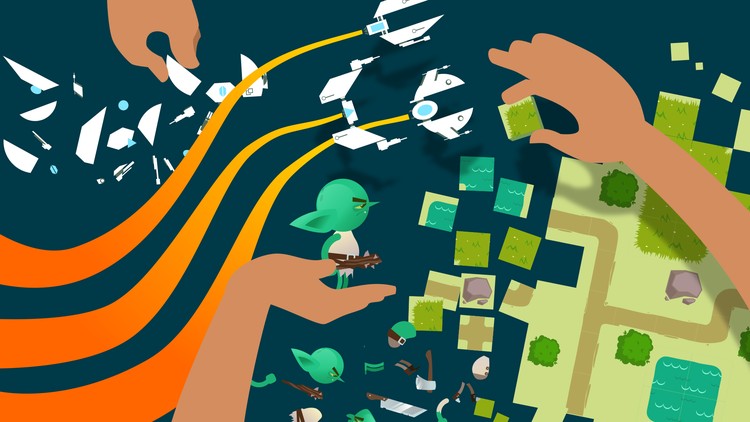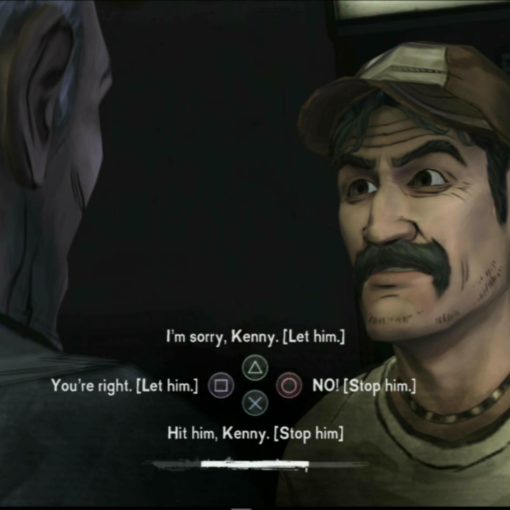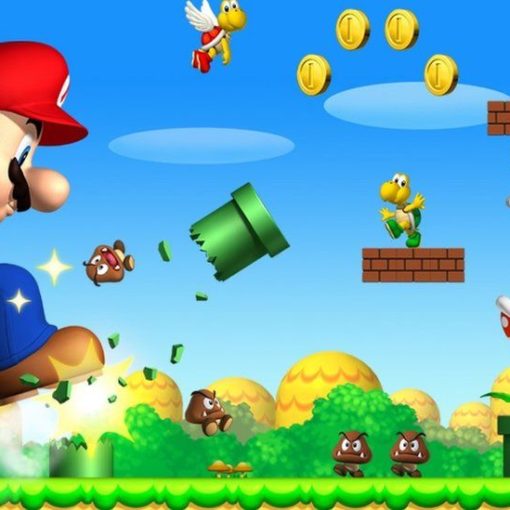This reading log entry responds to the following assigned articles:
Graham Shaw (2016) “Why people believe they can’t draw and how to prove they can,” TEDx Talks YouTube, April 1. (Assigned for 9/23)
Herman Tulleken (2015) “Color in games: An in-depth look at one of game design’s most useful tools,” Gamasutra, July 29. (Assigned for 9/25)
Tyler Seitz (2012) “Picking a color palette for your game’s artwork,” Envato Tuts. October 22. (Assigned for 9/27)
Sonny Bone (2015) “Minimalism in game design: Examples, tips, and ideas,” Envato Tuts, November 20. (Optional reading on 9/24)
Mary Winkler (2016) “What is pixel art?” Envato Tuts. January 13. (Optional reading on 9/27)
After you have read through these readings, please write a short, personal response to the reading. In your response, at a minimum, you should comment on at least two interesting, confusing, or controversial ideas that you took away from one of the assigned articles. Your reading log entry should be between 200 and 300 words, but you should feel free to write a longer response if you have much to say.





One of the major questions that people ask about a video game is, if it’s good? The problem with this question is that it’s incredibly general. From a companies perspective, a good game is one that brings in money. From a writer’s perspective, a good game is one that has a well constructed story. I could go on and on using other people’s perspective, but regardless of who it is, the graphics are what we all see first. When a new game releases a trailer you never hear “the story is great” or “the game play is amazing.” Which means… Read more »
The TEDx talk on how everyone can draw honestly really annoyed me. I completely agree with the basic message that drawing is a skill that everyone can acquire and that it isn’t a case of “you either have it or you don’t”, and I think that what Shaw is doing by teaching people (especially disabled people, children, teenagers, and those recovering from strokes) how to draw is a wonderful idea, but for the most part the presentation really rubbed me the wrong way. It might just be that it sort of… makes light of the many years of hard work… Read more »
Thinking about art in games is something that I quite like to do — nothing can really make a gaming experience come together than an appropriate art style for it. With that said, thinking about the art that goes into my games is stressful, largely because I don’t really consider myself to be a graphic or visual artist in any real sense of the word. It is because of this fact that I found Graham Shaw’s TED Talk to be fascinating. It was honestly incredible to realize how few lines it took to make something recognizable come about, and while… Read more »
A particular aspect that I liked about the TEDx video was the fact that there are small ways in which a person can start acquiring a new skill or ability through simple steps that honestly do not require the highest ability of people. In all honesty yes I am speaking through a biased perspective, especially since as Graham Shaw mentions, I am very much the kind of person who is afraid and skeptic of trying out something I do not consider myself good at, but that as he points out, doesn’t really require a mastery of that particular skill. With… Read more »
I and I imagine other students was annoyed by the TEDx Talk claiming that anyone can draw. I disagree with this greatly, not everyone can draw, and specifically their are many people with motor disabilities, hand drawing, and other issues that he does not address clearly and in-detail within his speech. While I agree it is possible for people to draw, It takes great amount of time, tools, and assistance then people who are naturally gifted at it. I person in their early or late 20s with a writing disability is going to have a bigger uphill climb then a… Read more »
Out of all of our readings, the article on minimalism was by far the most interesting to me. I’ve spent quite a bit of time thinking about color palettes and styles in games, but up until now hadn’t really put into words the value of minimalism, though I’ve certainly felt the impact of it! Keeping the buttons that the player uses to interact with the world consistent and familiar is super important, as it affects every aspect of how they interact with the game from beginning to end, and any frustration with the interface will constantly be wearing on them.… Read more »
The assigned articles all detailed different aspects of color in video games. These aspects included: responses created by gaming art, how color can unify a game (or even make parts of it seem different), and tips for utilizing color and style in games. I found the section on color being able to unify and differentiate parts of a game to be a particularly interesting concept. It was something I already knew (at least subconsciously), but never really considered. After reading that part I looked at some of the games I played (Binding of Isaac, Banner Saga, and Night in the… Read more »
The “Minimalism in game design” reading offers the Wii console and Wii Sports games as prime examples on minimalism. I wholeheartedly agree with this example but would love to add the narrative of messages and meaning. The beginning of the article introduces the idea that simplicity leads to an easier time conveying a message. I’d like to ask what message Wii Sports is trying to communicate to us as the “most successful minimalist game of all time.” The draw video was interesting, I thought the cartoons produced were really charming. What I took from this Ted talk was that people… Read more »
Minimalism in games, according to the article, refers essentially to the focus on simplifying certain aspects of the game in order to emphasize the gameplay itself in some way. The first thing that I thought of when I read this article was the countless Flash games that I played growing up (which I assume will also be the manner of games that we’re creating in this class). What springs to mind immediately was a game called “Warlords: Call to Arms.” I must’ve played at least 40 hours of this game by the time I graduated high school, and still go… Read more »
For this blog entry I will be focusing mainly on two articles and the TED talk. I started by watching the TED talk called “Why people believe they can’t draw and how to prove they can” by Graham Shaw. For someone like me who is 0% artsy i found it very interesting. The speaker is not trying to convince us that we all have that artistic touch and can do crazy pieces of art. Instead, he is saying that with simple shapes we can still do something nice and appealing. This I can relate with the article of minimalism by… Read more »